29・Germany・queer・language learning (mainly Norwegian and Japanese), photography, art, and figure skating, among other things...
Don't wanna be here? Send us removal request.
Text
24. - 26.02.24 Entrance exams 入学試験

Vocab
下旬(げじゅん)last third of the month
上旬(じょうじゅん)first third of the month
全国各地(ぜんこくかくち)nationwide; all over the country
科目(かもく)(school) subject; course
臨む(のぞむ)to take part in; to face (a situation); to deal with (an issue)
合格する(ごうかくする)to pass (an exam)
交通機関(こうつうきかん)transit system
乱れる(みだれる)to be disordered; to lapse into chaos
遅刻する(ちこくする)to be late/delayed
Translation
From the last third of January until the first third of March, entrance examinations are held all over the country. One chooses the school one wants to go to or the subjects one wants to study and takes part in the exams. Up until the exams everyone studies as hard as they can, and if they pass, they are admitted starting in April. However, depending on the place it might snow, disrupting transit systems and delaying the entrance exams, but hopefully that problem doesn't arise this year.
True or False?

Answer and Translation
❌ 入学試験は2月中だけです。Entrance exams are only (held) during February.
✅ 入学試験をしたい学校や大学は自分で選ぶことができます。You can choose the school or university you want to take the entrance exam for.
❌ 入学試験が終わったら、すぐに入学できます。You can enroll immediately after completing the entrance exam.
✅ 天候によって、交通機関が乱れることもあります。Depending on the weather, transportation may be disrupted.
❌ 4月からはみんな入学できます。Everyone can enroll starting in April.
44 notes
·
View notes
Text
11.02.24 建国記念の日(けんこくきねんのひ)National Foundation Day

Translation
The Founding of Japan
In Japan, there are no history books that were written before the 8th century. The oldest history book "Kojiki" came into existence in 712. The first emperor to make an appearance in it, Emperor Jinmu, is said to have assumed the throne in 660 BC. However, between "Kojiki" and the Ascension to the throne of Emperor Jinmu there is a time span of over 1.100 years, which cannot be accepted as historical fact. Before the [Second World] War, this day was called ”Kigensetsu" and was celebrated as the Foundation Day of Japan. After the war, it was temporarily abolished, but it was established once again as a national holiday in 1966 as a day to celebrate the founding of Japan.
Vocab
建国(けんこく)founding of a nation
成立する(せいりつする)to come into existence/effect
最古の(さいこの)the oldest
古事記(こじき)Kojiki, the earliest historical record of Japan, a collection of myths concerning the origin of the four home islands of Japan.
登場する(とうじょうする)to make an appearance; to come into the picture; to emerge
神武天皇(じんむてんのう)Emperor Jinmu
紀元前(きげん全)BCE; Before Common Era
即位する(そくいする)to ascend/assume the throne
史実(しじつ)historical fact
認める(みとめる)to accept; to recognize
廃止する(はいしする)to abolish; to discontinue
再び(ふたたび)once again/more
制定する(せいていする)to establish
29 notes
·
View notes
Text
01.02.24 旧暦(きゅうれき)Japan's old lunisolar calendar
In the modern Gregorian calendar February is 二月 ("second month"). What is the old Japanese term for the second month in the lunar calendar? First read the text and search for clues in order to find the answer ⬇️

Answer and Translation
In the Japanese old lunisolar calendar, February is called 如月(きさらぎ). This name has two meanings:
1. It's still cold, so one wears many [layers of] kimono (Japanese meaning).
2. Everything is starting to head/move towards spring (Chinese meaning).
Here are the names of all of the monthsof Japan's old lunisolar calendar along with the meanings behind the kanji:
一月・睦月(むつき)睦=harmonious relationship
二月・如月(きさらぎ)如 can be substituted for 衣更 ("clothing" and "further demand for") showing the need for many layers of clothes.
三月・弥生(やよい)弥 ("increasingly") and 生 ("life")
四月・卯月(うずき)卯 was originally 植 referring to rice planting
五月・皐月(さつき)皐 is a substitute for 早苗 ("rice seedling")
六月・水無月(みなずき)the 無 here does not imply lack of, but rather abundance! It's the month of rice paddies overflowing with water.
七月・文月(ふみずき)文 ("writings; sentence") refers to the colorful paper slips with wishes attached to bamboo for the annual Tanabata festival on July 7th.
八月・葉月(はずき)葉=leaves, which start to change color
九月・長月(ながつき)長 ("long") refers to the increasingly long nights.
十月・神無月(かんなずき)"month without gods" refers to the belief that the gods get together at this time of the year at the Izumo Grand Shrine, leaving the rest of Japan without gods.
十一月・霜月(しもつき)霜=frost
十二月・師走(しわす)師 ("mentor; teacher") and 走 ("run") refers to Buddhist monks busily rushing around at this time of year.
16 notes
·
View notes
Text
20.01. - 22.01.24 寒稽古 mid-winter training
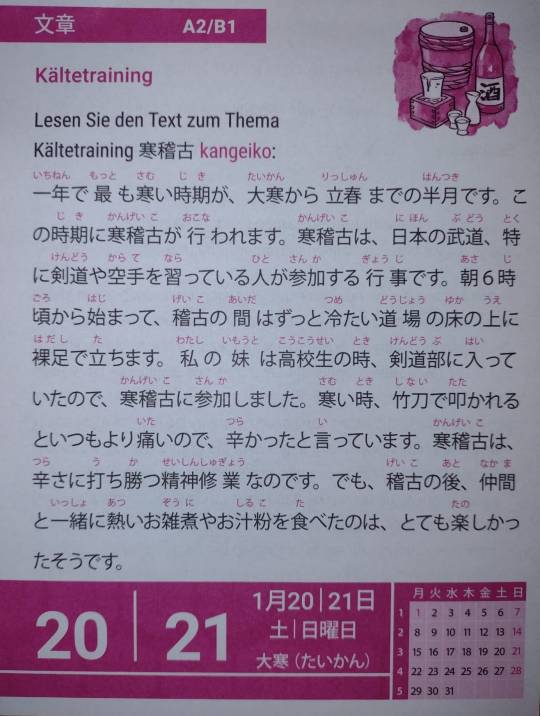
Translation and Vocab
The coldest period of the year is the half-month from the "Major Cold" to the "Start of Spring" [ca. Jan. 20 - Feb. 4]. During this time, kangeiko mid-winter training takes place. Mid-winter training is an event that people learning Japanese martial arts, especially kendō and karate, take part in. It begins around 6am, and during the whole training the students stand barefoot on the cold floor of the dōjō. When my younger sister was in high school, she joined a kendō club, so she participated in mid-winter training. She said it was tough because in the cold it hurt more than usual when she was hit with the bamboo sword. Mid-winter training is mental training for overcoming pain. However, after mid-winter training, she had fun eating hot ozōni and oshiruko with her teammates.
寒稽古(かんげいこ)mid-winter training done in the martial arts in the early morning during the coldest time of the year
大寒(だいかん)"Major Cold" (around Jan. 20, coldest time of year)
立春(りっしゅん)"Start of Spring" (according to the traditional lunisolar calendar, approx. Feb. 4)
武道(ぶどう)martial arts
裸足で(はだしで)barefoot
竹刀(しない)bamboo sword (for kendō)
叩く(たたく)to hit; to strike
打ち勝つ(うちかつ)to overcome
精神(せいしん)mentality; mind
修業(しゅぎょう)training; pursuit of knowledge
お雑煮(おぞうに)soup containing rice cakes and vegetables
お汁粉(おしるこ)sweet red-bean soup with mochi
youtube
Seems like kangeiko for karate also includes events where members have to wade into cold water - feel so sorry for that little boy who just wants to get to a hot onsen 🙈
youtube
Questions about the text ⬇️

Answer and Translation
1. 寒稽古はいつ行われますか。When is mid-winter training held?
一年で最も寒いと言われる時期、大寒と立春の間に行われます。It is held during what is called the coldest period of the year, between taikan and risshun.
2. 日本人なら誰でも寒稽古をしますか。Does every Japanese person do mid-winter training?
いいえ、武道、特に剣道や空手を習っている人がします。No, people practicing martial arts, especially kendō and karate, do it.
3. 寒稽古の時、靴か草履を履いてもいいですか。Is it okay to wear shoes or zōri (rice-straw sandals) during mid-winter training?
いいえ、裸足で稽古をします。No, one does the training barefoot.
4. 剣道の寒稽古で辛いことは、例えば何ですか。What are examples of difficult things during mid-winter training in kendō?
例えば、竹刀で叩かれるのが、寒い時はいつより痛いので、辛いです。For example, it's difficult because being hit by the bamboo sword hurts more than usual when it's cold.
2 notes
·
View notes
Text
16.01.24 四字熟語 (four-character idioms) containing 一

Answer and Translation
1. 昔の日本人の食事は、ご飯と一汁一菜が基本でした。In the past, basic Japanese meals consisted of rice, broth, and a side dish.
一汁一菜(いちじゅういっさい)traditional one-plate meal (lit. "one broth one side-dish")
2. どのアイディアも一長一短で、なかなか決められません。Every idea has it's pros and cons, so it's hard to make a decision.
一長一短(いっちょういったん)advantages and disadvantages; pros and cons (lit. "one merit one fault")
3. 映画監督は撮影の間、俳優の一挙一動を見ています。During filming, film directors are watching an actor's every move.
一挙一動(いっきょいちどう)one's every move/action; everything one does (lit. "one action one move")
4. お客様を迎えるときは*、いつも一期一会の気持ちが大切です。When welcoming customers, (providing) a once-in-a-lifetime experience is important.
一期一会(いちごいちえ)once-in-a-lifetime encounter; uniquely precious experience (lit. "one period one meeting")
* I believe there's a typo/an omission on the original page, so I've added ときは for "when"
33 notes
·
View notes
Text
08. & 09.01.24 Coming of Age Day 成人の日
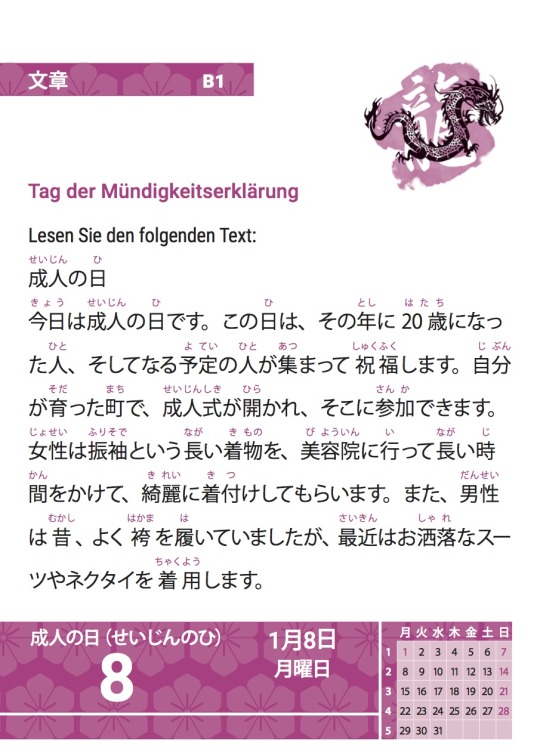
Vocab
成人のひ(せいじんのひ)Coming of Age Day
祝福する(しゅくふくする)to celebrate
開く(ひらく)to hold (an event)
振袖(ふりそで)furisode, a long-sleeved kimono for unmarried women
美容院(びよういん)beauty salon
着付け(きつけ)fixing up; dressing up
袴(はかま)hakama, traditional Japanese pants
お洒落な(おしゃれな)fashionable; elegant
着用する(ちゃくようする)to wear
Translation
Today is Coming of Age Day. On this day, people who have turned 20 as well as those who will turn 20 gather and celebrate. In the town in which one has grown up there are Coming of Age ceremonies that one can participate in. Women wear long kimonos called furisode and spend a lot of time in beauty salons to get dressed up beautifully. Back in the day men often wore hakama, but nowadays they wear fashionable suits and ties.
True or False?

Answer and Translation
✅ 成人の日はその年に20歳になった人と20歳になる人が祝います。On Coming of Age Day, people who have turned 20 and people who will turn 20 celebrate.
❌ 成人式は自分の家でします。Coming of Age celebrations are done at home.
✅ 女性はよく美容院で振袖を着せてもらいます。Women often get their furisode put on at beauty salons.
❌ 男性は今も成人式に袴をはかなければなりません。Men must wear hakama at their Coming of Age ceremony.
✅ 最近、男性は成人の日にネクタイとスーツを着ます。Nowadays, men wear suits and ties for Coming of Age Day.
12 notes
·
View notes
Text
12.01.24 鮭のガーリックバター醤油炒め
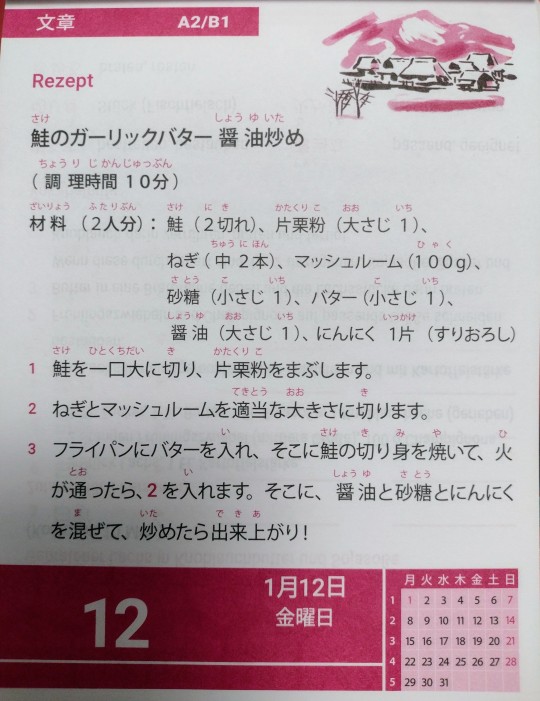
Translation
Stir-fried salmon with garlic butter and soy sauce
(Cooking time: 10 minutes)
Ingredients (2 portions): salmon (2 fillets), potato starch (1 table spoon), green onions (2 medium-sized), mushrooms (100g), sugar (1 teaspoon), butter (1 teaspoon), soy sauce (1 table spoon), 1 clove garlic (grated)
Cut the salmon into bite-sized pieces and sprinkle with potato starch.
Cut the green onion and mushrooms into suitable sizes.
Put butter into a frying pan, fry the salmon fillets in it and when they are cooked through, add the ingredients from step 2. Mix in soy sauce, sugar, and garlic, fry everything and it's finished!
Vocab
炒め(いため)stir-fry
材料(ざいりょう)ingredients
鮭(さけ)salmon
片栗粉(かたくりこ)potato starch
大さじ(おおさじ)tablespoon
小さじ(こさじ)teaspoon
すりおろし grated
一口大(ひとくちだい)bite-sized
切る(きる)to cut
まぶす to sprinkle
切り身(きりみ)fish fillet
焼く(やく)to fry
炒める(いためる)to fry; to sauté
適当な(てきとうな)fitting; suitable
火が通る(ひがとおる)to cook through
10 notes
·
View notes
Text
04.01.24 Winter-themed katakana vocab

Vocab
コート coat
セーター sweater
ストーブ stove
スノーモービル snowmobile
ブーツ boots
スキー ski
ホットレモン hot lemon
マフラー "muffler" -> scarf
スノードロップ Snowdrop (Galanthus)
アノラック anorak
ゲレンデ "Gelände" -> ski piste; ski slope
クリスマスローズ Christmas rose (black hellebore)
26 notes
·
View notes
Text
02.01.24 Seasonal dishes 茹で蟹、寄せ鍋、つけ麺

Vocab
茹でる(ゆでる)to boil
ズワイガニ(ずわいがに)snow crab
煮る(にる)to braise
つゆ soup; broth
記す(しるす)to note; to write down
毛ガニ(けがに)horsehair crab
具(ぐ)ingredient
麺類(めんるい)noodles
Answer and Translation
B 茹で蟹(ゆでかに boiled crab)Snow crabs and horsehair crabs are commonly consumed in Japan. Crabs caught in winter have a good taste, so they are often eaten at the end or beginning of the year when everyone is gathered together.
C 寄せ鍋(よせなべ chowder)This is a dish in which fish, meat, vegetables etc. are added to a pot of soup and eaten while simmering. It warms the body, so families and friends eat it together on cold winter evenings. The soup's taste and it's ingredients vary depending on the region and household.
A つけ麺(つけめん)A noodle dish in which the noodles are dipped into a broth. Nowadays it's mainly considered a type of Japanese ramen dish. Depending on the locale it will be listed on the menu as morisoba, tsukesoba or zaru.

9 notes
·
View notes
Text
28.12. New Year's Dishes おせち料理
Today is the last business day of the year (at least, it was in 2021 😉). What do you need to do in the office or at home? Choose four answers ⬇️

Answer and Translation
A. You decorate the kadomatsu.
B. You greet your boss, colleagues and acquaintances with "Happy New Year" and "Please take care of me next year as well."
C. Students do their winter-break homework.
D. You tidy up your office.
E. You start preparing the New Year's dishes.
F. You visit a shintō shrine.
Vocab
門松(かどまつ)traditional Japanese decorations made for the New Year, usually placed in pairs in front of homes and buildings
整頓する(せいとんする)to tidy up; to neaten; to organize
おせち料理(おせちりょうり)traditional New Year's food

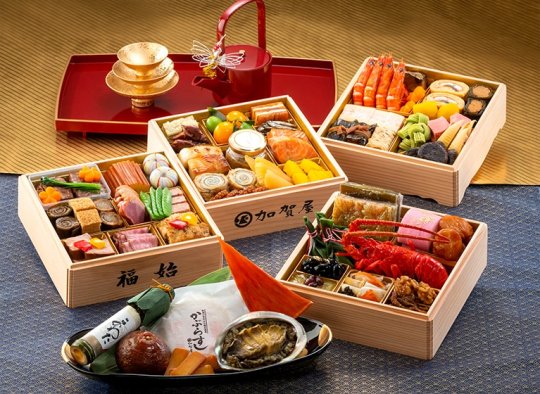
Examples of おせち料理
Kazunoko (数の子・かずのこ), herring roe. Kazu (数) means "number" and ko (子) means "child", so it symbolizes a wish to have numerous children in the New Year.
Daidai (橙・だいだい), Japanese bitter orange. Daidai also means "from generation to generation" when written 代々. Like kazunoko (数の子), it symbolizes a wish for children in the New Year.
Konbu (昆布・こんぶ), a kind of seaweed. It is associated with the word yorokobu (喜ぶ), meaning "joy", so it symbolizes a joyous New Year.

Tazukuri (田作り・たずくり), dried sardines cooked in soy sauce. The literal meaning of the kanji in tazukuri is "rice paddy maker", as the fish were used historically to fertilize rice fields, so the dish symbolizes an abundant harvest.
Kōhakunamasu (紅白なます) is made of daikon and carrot cut into thin strips and pickled in sweetened vinegar with yuzu flavor.
Nishikitamago (錦卵/二色玉子・にしきたまご), egg roulade; the egg is separated before cooking, yellow symbolizing gold, and white symbolizing silver, and together symbolizing wealth and good fortune.
Kamaboko (蒲鉾・かまぼこ), broiled fish cake. The red and white colors represent the rising sun, a symbol of Japan, and the semicircular shape of the fish cake symbolizes the first sunrise of the New Year.

25 notes
·
View notes
Text
25.12. & 26.12. History of Christmas in Japan
Put the following historical events related to Christmas in Japan in order and add the correct year ⬇️

Answer and Translation
5. It is said that the beginning of Christmas in Japan was in 1552 when Franz Xavier, who came to Yamaguchi Prefecture as a Christian missionary, gathered a group of followers together to hold mass on December 24th.
2. In 1568 the Jesuit Luis Frois wrote that "Nobunaga Oda und Hisahide Matsunaga called a truce on Christmas": it thus seems that Christmas took place in several regions in Japan.
4. However, in 1612m the Edo Shogunate issued a ban on Christianity, and Christmas temporarily disappeared.
1. After the Meiji Restoration, the ban on Christianity was lifted in 1873 and Christmas had a resurgence.
3. In 1904 in Tokyo's Ginza district, a Christmas tree was decorated for the first time as part of a commercial display.
Vocab
明治維新(めいじいしん)Meiji Restoration
キリスト教禁止令(くりすときょうきんしれい)ban on Christianity
復活する(ふっかつする)to have a resurgence; to make a comeback
イエズス会士(いえずすかいし)Jesuit
一時休戦する(いちじきゅうせんする)to have a temporary truce/cease-fire
商業(しょうぎょう)trade; commerce
飾る(かざる)to decorate; to adorn
宣教師(せんきょうし)missionary
江戸幕府(えどばくふ)Edo Shogunate
信徒(しんと)believer; follower (of a religion)
19 notes
·
View notes
Text
神無月 (kan-na-zuki) "October" (archaic)
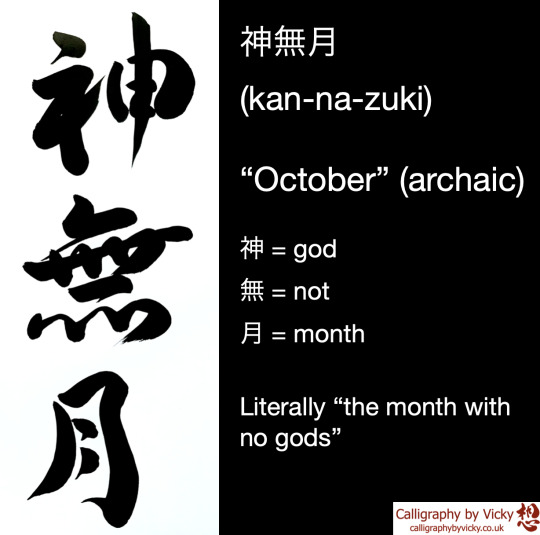
神 = god 無 = not 月 = month
The modern Japanese word for October is 十月 (literally "10th Month), however in the old-fashioned calendar is was known as 神無月, or "the month with no gods".
In October, all the gods in Japan (there are believed to be 8 million of them) go to Izumo Shrine in Shimane Prefecture for a meeting, thus leaving most of Japan with no gods.

The huge shimenawa (sacred rope) at Izumo Shrine.
2K notes
·
View notes
Photo

Hans Dieter (German 1881-1968), View of Lake Konstanz with Lampion Decorated Boats on a Summer Night, 1949
555 notes
·
View notes
Photo

Members of Lebanon’s LGBTQ community attend a picnic in the coastal city of Batroun, north of Beirut, on May 21, 2017, as part of the Beirut Pride week aimed at raising awareness about the rights of the community. Ibrahim Chalhoub/AFP
2K notes
·
View notes
Photo
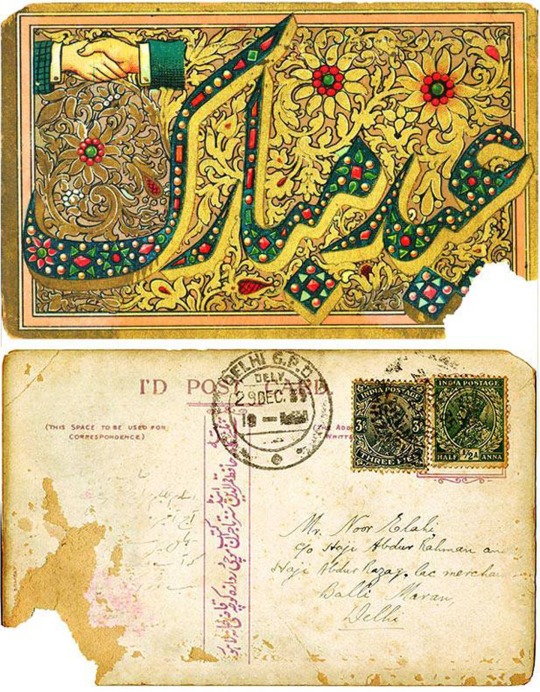
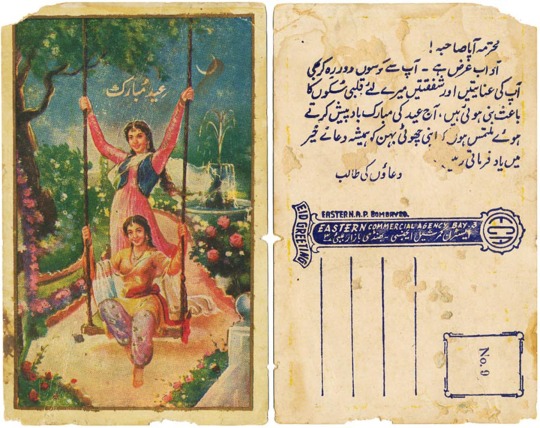


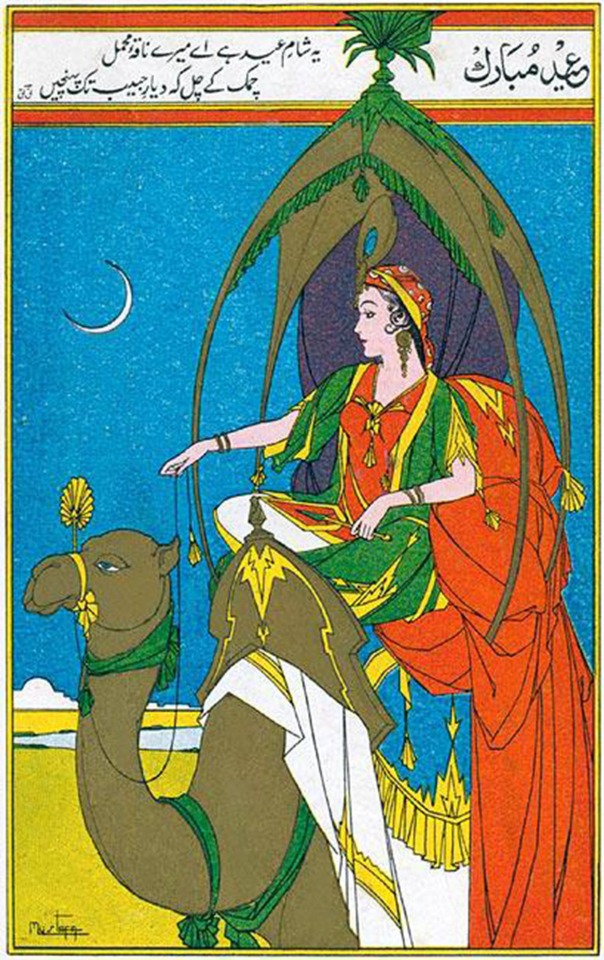
Vintage Eid Cards
Collected by Aown Ali
1K notes
·
View notes
Text
Lithuanian Velykos (Easter) traditions and beliefs from the pagan times
o Velykos’ celebration lasted 4 days and each day had its own name: ugnies diena (the Day of Fire), dievo Perkūno diena (the Day of Thunder god Perkūnas), gegužės diena (the Day of May or the Day of Cuckoo) and ledo diena (the Day of Ice);
o It was believed that you can kill evil spirits by shooting while walking around the house during Velykos’ night or early morning;
o In the morning sun bounces up into the sky;
o Apple trees were shaken to wake them up from žiemos miegas (winter sleep);
o Weather was predicted based on the winds and the sun on Velykos’ morning: Šiaurys (Northern wind) meant cold summer, Pietys (Southern wind) - warm summer, Vakaris (Western wind) - rainy summer, sunny morning meant bright cloudless summer;
o The main traditional dish is margučiai - boiled eggs decorated with Baltic ornaments.
208 notes
·
View notes